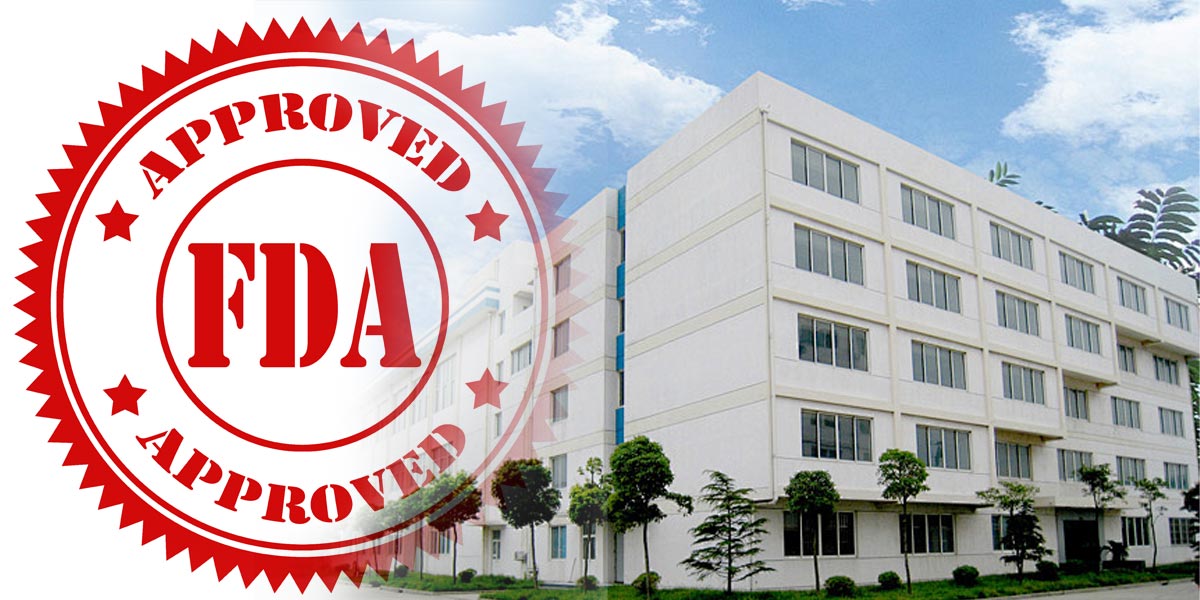In our last article, we discussed ensuring that purchased cosmetics comply with EU standards. However, some friends have wondered how to ensure that the cosmetics they purchase meet the requirements of the United States, and what certifications the products need. With the increasing globalization trend of the cosmetics market, understanding the requirements of different countries and regions for cosmetics becomes crucial. As one of the world’s largest cosmetics markets, the United States’ standards and requirements for product certification are closely watched. Selling cosmetics in the US market requires compliance with strict regulations and standards to ensure product safety and quality. Adhering to US cosmetics requirements is crucial because it not only concerns consumer health and safety but also affects a company’s reputation and market access. This article will explore how to ensure purchased cosmetics meet US regulations and standards, laying a reliable foundation for companies entering the US market!
Purchase products that meet FDA standards. On December 29, 2022, President Biden signed into law the 2022 Food and Drug Comprehensive Reform Act (FDORA), which includes the much-anticipated 2022 Modernization of Cosmetics Regulations Act (MOCRA) — the first major update to US cosmetics regulations since 1938. The bill proposes significant revisions to the existing Federal Food, Drug, and Cosmetic Act (FDC Act) intending to modernize cosmetic safety standards in the United States. The new regulations will require cosmetic companies to register their businesses and file product listings, expected to take effect one year after formal legislation. The MOCRA focuses on product safety and brings significant changes to existing regulations. It establishes a series of standards for cosmetic product safety and company manufacturing practices and grants new powers to the FDA. All facilities involved in the manufacture or processing of cosmetics must register with the FDA and update their registration every two years.
1. Understand FDA requirements: Before purchasing cosmetics, it’s essential to understand the FDA’s requirements and regulations for cosmetics products. These regulations include restrictions on ingredients, labeling requirements, product testing, and safety assessments.
2. Select suppliers or manufacturers who have been FDA audited and meet its requirements. Ensure that their products and manufacturing processes comply with FDA standards.
3. Ensure that the labels of purchased cosmetics comply with FDA requirements. Labels should include necessary information such as product ingredients, usage instructions, warnings, etc., and should be clear and legible.
4. If there are any questions or need further guidance, you can directly communicate with the FDA. They can provide advice and guidance on product compliance.
Check ingredients. Responsible individuals from cosmetics manufacturers, packagers, or distributors must list every marketed cosmetic and its ingredients to the FDA and update them annually. If a product is both a drug and a cosmetic, it does not need to be listed as a cosmetic, but the listed product should be determined as a drug and a cosmetic when submitted for drug listing. The amendment to the Environmental Protection Act signed by New York Governor Hochul (A8630A) prohibits the use of ethylene oxide or mercury in cosmetics and personal care products. This law will take effect on June 1, 2023, and from the effective date, cosmetics or personal care products containing ethylene oxide or mercury may not be sold in New York State.
Check product sourcing. Ensuring that purchased cosmetics comply with the standards of the US Food and Drug Administration (FDA) is crucial, especially if you plan to sell these products in the US market. Checking product sourcing and ensuring compliance with all relevant safety and labeling requirements are essential to ensure that your cosmetics meet FDA standards. If you want to confirm whether the cosmetics brand or product you purchased is compliant and meets FDA regulatory requirements, it is essential to check the product’s source. This includes understanding the ingredients they use, the product manufacturing process, and whether they comply with applicable laws and standards. Alternatively, you can contact the brand’s official website. They typically provide detailed information about the product, including compliance explanations. Additionally, check the FDA website for relevant information. Consult professional organizations/regulatory bodies: Professional regulatory consulting organizations can provide queries related to cosmetics compliance. Additionally, the US FDA has clear requirements for cosmetic ingredients and labels. For example, certain ingredients are restricted or prohibited from use in cosmetics. Furthermore, accurate labeling information is essential for consumers to ensure product transparency and safety.
- Pay attention to FDA warnings and notices: If you are involved in cosmetics, whether as a unique brand or a distributor, it is essential to constantly monitor FDA warnings and notices regarding cosmetics. Below are some recent FDA cosmetics notices;
- Purchase legal products. Purchasing legal cosmetic products significantly increases the chances of buying legal and safe products that meet US FDA standards.
Pay attention to FDA warnings and notices: If you are involved in cosmetics, whether as a unique brand or a distributor, it is essential to constantly monitor FDA warnings and notices regarding cosmetics. Below are some recent FDA cosmetics notices;
1. The signing of the 2022 Cosmetic Regulation Modernization Act (MoCRA) on December 29, 2022, marks a significant reform for the US cosmetics industry. This reform shifts cosmetics from voluntary registration to mandatory registration, meaning that cosmetics imported into the United States must be FDA-certified. In March of this year, the FDA stopped receiving and processing registrations for the cosmetics VCRP system and released the final guidance on cosmetics establishment registration and product listing on December 18.
2. The cosmetics registration system is still being improved, and to ensure that the industry has sufficient time to submit facility registrations and product listings, the FDA plans to extend the enforcement deadline from December 29, 2023, to July 1, 2024. It is recommended that sellers who sell or plan to sell cosmetics in the United States understand and prepare in advance to complete establishment registration and product listing before July 1, 2024.
3. Cosmetic manufacturers and processors must register with the FDA, and if there are any changes to the enterprise, they must update their registration content within 60 days. Unlike the voluntary registration of the FDA VCRP, establishment registration must be updated every two years.
4. There are two ways to submit cosmetics FDA registration: paper submission and electronic submission. On December 18, the FDA officially announced a new electronic submission website called Cosmetics Direct, used for listing registered cosmetic products. The FDA strongly recommends using electronic submission. Sellers can choose to register themselves or have a third-party service agency register on their behalf.
Purchase legal products. Purchasing legal cosmetic products significantly increases the chances of buying legal and safe products that meet US FDA standards.
1. Before making a purchase, it is necessary to have a deep understanding of the FDA’s specific requirements for product categories. The FDA website provides extensive resources, including guidelines, regulations, warning letters, recall information, and safety notifications, which are valuable sources of information.
2. Choose reputable suppliers: Only purchase products from reputable suppliers or direct selling companies. Researching a company’s history, reading consumer reviews, and checking for any legal litigation or FDA warning letters can help determine the credibility of the supplier.
3. Check product labels and ingredients: According to FDA requirements, cosmetic labels must provide accurate ingredient lists, product names, manufacturer or distributor information, etc. Ensure that product labels comply with these standards and that all ingredients are permissible.
4. Other aspects include requesting third-party test reports, closely monitoring FDA warnings and recalls, using FDA and other reputable public health resources to educate yourself, understanding how to identify safe and compliant products, etc.
Consult professionals. When purchasing cosmetics products that comply with US FDA standards, consulting professionals is a wise practice. Professionals can provide in-depth knowledge and advice on product safety, legality, and how to verify that these products truly meet FDA standards. Professionals, such as cosmetic chemists industry associations, quality assurance experts, and certification bodies, can not only help you better understand regulatory requirements for specific products or ingredients but also provide practical advice and strategies to ensure that your cosmetic procurement meets all relevant standards. Additionally, professional support can help you avoid potential compliance risks and the future!
Whether it’s EU standards or US FDA standards, ensuring the safety and compliance of cosmetics is an ongoing process. With regulations evolving and product innovation progressing, staying informed and adapting to these changes is key to ensuring that the cosmetics you purchase consistently meet FDA standards. With the right knowledge and resources, you can provide yourself and your customers with safer and more reliable cosmetic products. By understanding FDA requirements, carefully selecting reputable suppliers, reviewing product ingredients and labels, and consulting professionals when necessary, you can significantly reduce the risk of purchasing non-compliant or potentially harmful cosmetics. We live in an age of abundant information, and using available resources and professional advice to guide your purchasing decisions is not only feasible but also wise. Let’s work together to ensure that every beauty choice is safe and responsible. By educating ourselves and adhering to these guiding principles, we can not only protect ourselves but also drive the entire cosmetics industry toward higher safety and quality standards. If you enjoyed our article, please give us a like! If the article was helpful to you, please share it with your friends as well. If you would like to learn more, leave us a message, or follow us and send us a direct message, our team will provide you with the best service possible!




